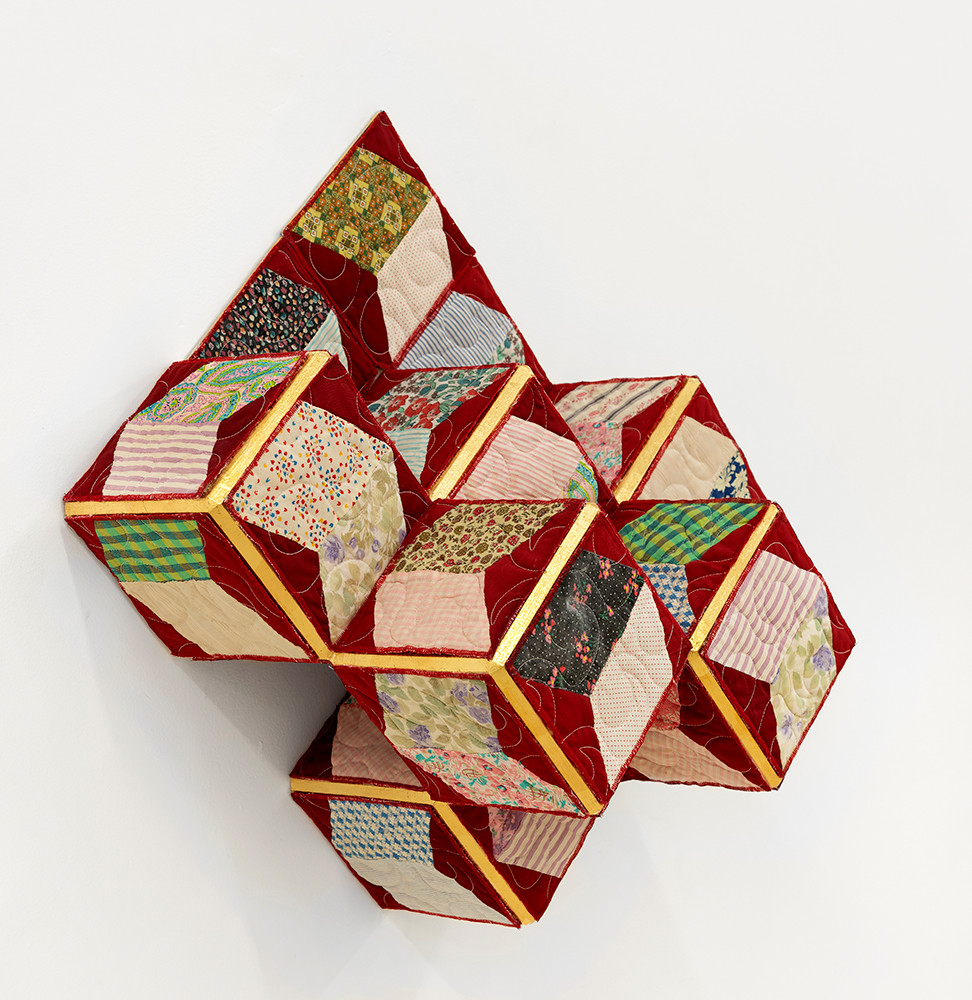[ad_1]
Photo Zachary Balber.
The centerpiece of Sanford Biggers’s 2015 solo show at David Castillo, timed to coincide with Art Basel Miami Beach, was the sculpture Laocoön (2015), a balloon figure of Bill Cosby’s comedic cartoon character Fat Albert lying facedown on the ground, attached to an air pump that caused it to expand and contract. The work incited heated debate among critics, some of whom saw it as a crass commentary on the killing of black men like Michael Brown and Eric Garner by police. “Quadri ed Angeli,” his most recent show at the gallery, was as formalist and quiet as the last one was politically topical and sensational, comprising seven new abstract works (all 2019) employing antique quilts.
Two “paintings”—large quilts from which sections have been excised—hung on either side of the gallery. In Somethin’ Close to Nothin’, Biggers has removed two slender curving shapes from a quilt with a red, yellow, and blue lattice pattern, the forms matched by hazy ones painted in black on the quilt’s surface that suggest shadows. Twintriloquism, whose front is patterned with diamond-shaped forms in muted shades of green, yellow, and brown, has a pair of tall rectangular flaps cut from its center. The flaps spill onto the floor, opening windows onto the white wall on which the work hangs and revealing the bright red plaid pattern on the quilt’s reverse side.
The other works on view were sculptural. Biggers glued pieces of antique patchwork quilts onto birch plywood with gilded edges, producing geometric compositions that variously recall origami, Rubik’s Cubes, and fractals. Most of these works hung on the wall, projecting out into space. One of them, Polyglot, is composed of a series of five cubic forms that rhyme with the bright, multicolored tumbling block patterning of the quilt segments adorning it. The transformation of the patterning into three dimensions produces an enigmatic structure that evokes something otherworldly, like an alien starship. Similarly, Semaphore, the only freestanding work in the exhibition, looks like a shuttle ready to lift off into space. More than five feet tall, the vertical structure comprises primarily triangular forms that jut from the work like fins.
Photo Zachary Balber.
As Biggers has described, his quilt works, which he began making in 2012, allude to the—probably apocryphal—practice of using quilts to mark safe spaces along the Underground Railroad. Indeed, many of the works’ titles refer to forms of coded communication: semaphore is a system of visual signaling using flags, while ventriloquism is the act of disguising one’s voice by projecting it so it appears to come from a different source. Taking up the traditions of coding and patterning, Biggers functions as an interlocutor between past and present. Throughout the show, particularly in the sculptures, the artist demonstrated his interest in Afrofuturism, an aesthetic that imagines the future of Africa and the African diaspora by reassessing the past through science-fiction tropes. In the exhibition materials, he characterized Harriet Tubman as an “astronaut” who led slaves to freedom by “navigating the stars.” In contrast to the explicit symbolism that had yoked Laocoön to current events, the abstraction in the new works allows them to gesture to speculative futures.
This article appears under the title “Sanford Biggers” in the February 2020 issue, pp. 90–91.
[ad_2]
Source link


